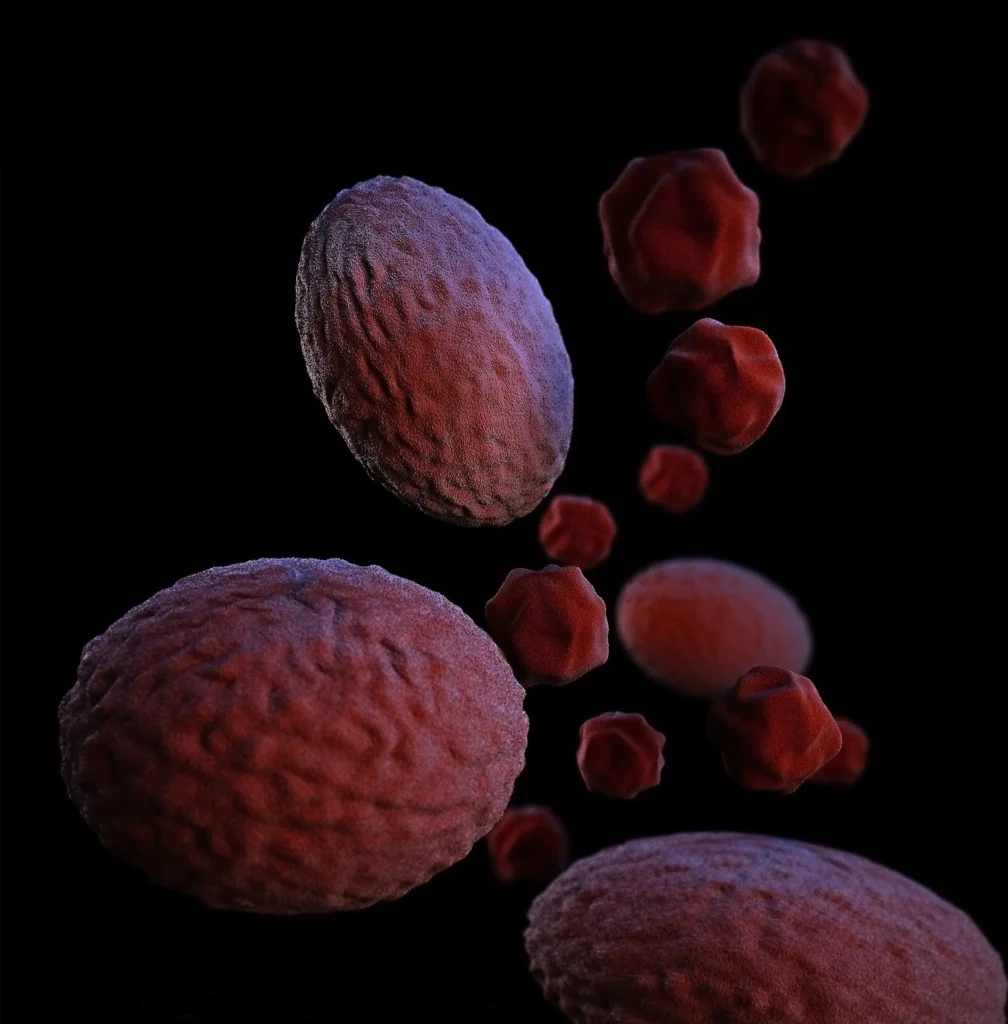Sexually transmitted infections (STIs), also known as sexually transmitted diseases (STDs), are a widespread health concern affecting millions of people around the world. STIs are caused by viruses, bacteria, or parasites that are transmitted from person to person through sexual contact, including vaginal, anal, or oral sex. Some common STIs include chlamydia, gonorrhea, syphilis, herpes, and human papillomavirus (HPV).
Sexually transmitted infections (STIs) are a major health concern affecting millions of people around the world. If left untreated, STIs can cause serious health problems and even lead to long-term consequences such as infertility, pelvic pain, and even death. In this article, we will discuss the basics of STIs, how to protect yourself from them, and what to do if you suspect you may have an STI.
What are Sexually Transmitted Infections (STIs)?
STIs are infections caused by viruses, bacteria, or parasites that are spread from person to person through sexual contact. Some common STIs include chlamydia, gonorrhea, syphilis, herpes, and human papillomavirus (HPV). STIs can be contracted through vaginal, anal, or oral sex and can be passed from mother to child during pregnancy or childbirth.

Symptoms of Sexually Transmitted Infections (STIs)
Sexually transmitted infections (STIs) can cause a range of symptoms, and some STIs may not cause any symptoms at all. It’s important to be aware of the symptoms of STIs so that you can seek prompt treatment if necessary. Common symptoms of STIs include:
Painful Urination
Painful urination is a common symptom of sexually transmitted infections (STIs). This discomfort can range from a mild burning sensation to severe pain and discomfort during urination. There are several STIs that can cause painful urination, including chlamydia and gonorrhea.
Chlamydia is a bacterial STI that affects the genital tract and urinary system. When left untreated, chlamydia can cause a range of symptoms, including painful urination, discharge from the penis or vagina, and pain during sex.
Gonorrhea is another bacterial STI that can cause painful urination. In addition to painful urination, gonorrhea can also cause discharge from the penis or vagina, painful sex, and lower abdominal pain.
If you experience painful urination, it’s important to see a healthcare provider for a diagnosis and appropriate treatment. Painful urination can also be caused by other conditions, such as urinary tract infections (UTIs), so it’s important to seek medical attention to determine the underlying cause.
Genital Discharge
Genital discharge is a common symptom of sexually transmitted infections (STIs). The discharge can range in color, consistency, and amount, and may be accompanied by other symptoms such as itching, burning, or pain. Some of the most common STIs that can cause genital discharge include chlamydia and gonorrhea.
Chlamydia is a bacterial STI that can cause a range of symptoms, including genital discharge. The discharge may be yellow or green in color and have a foul odor. In addition to discharge, chlamydia can also cause painful urination and pain during sex.
Gonorrhea is another bacterial STI that can cause genital discharge. The discharge may be white, yellow, or green in color and have a thick consistency. In addition to discharge, gonorrhea can also cause painful urination, painful sex, and lower abdominal pain.
Genital Sores
Genital sores are a common symptom of sexually transmitted infections (STIs). The sores can range in size, shape, and location and can be accompanied by other symptoms such as genital itching, burning, or discharge. Some of the most common STIs that can cause genital sores include genital herpes and syphilis.
Genital herpes is a viral STI that can cause painful, fluid-filled blisters or sores in the genital area. The sores can break open, become painful, and eventually heal. Genital herpes can also cause flu-like symptoms, such as fatigue and muscle aches, and can be accompanied by itching or burning in the genital area.
Syphilis is a bacterial STI that can cause small, painless sores or ulcers in the genital area. The sores can be accompanied by other symptoms such as fatigue, muscle aches, and swollen lymph nodes. If left untreated, syphilis can progress to later stages, which can cause serious health problems, including heart disease and blindness.
If you experience genital sores, it’s important to see a healthcare provider for a diagnosis and appropriate treatment. Genital sores can also be caused by other conditions, such as herpes zoster or insect bites, so it’s important to seek medical attention to determine the underlying cause.
Rashes
Rashes can be a symptom of sexually transmitted infections (STIs). A rash in the genital area can range from a mild, red, itchy patch of skin to painful, blistering sores. Some of the most common STIs that can cause rashes include genital warts and molluscum contagiosum.
Genital warts are a viral STI caused by the human papillomavirus (HPV). They can cause small, fleshy growths or warts in the genital area. The warts can be flat or raised, single or multiple, and can be accompanied by itching or burning.
Molluscum contagiosum is a viral STI that can cause small, raised, flesh-colored growths or bumps in the genital area. The bumps can be accompanied by itching or burning, and can be easily spread through skin-to-skin contact.
Rashes can also be caused by other conditions, such as contact dermatitis or jock itch, so it’s important to seek medical attention to determine the underlying cause.
Lower Abdominal Pain
Lower abdominal pain can be a symptom of sexually transmitted infections (STIs). This type of pain is usually caused by inflammation or infection in the reproductive organs. Some of the most common STIs that can cause lower abdominal pain include chlamydia and gonorrhea.
Chlamydia is a bacterial STI that can cause pain in the lower abdomen, as well as discharge from the vagina or penis, and burning or pain during urination. If left untreated, chlamydia can cause serious health problems, including infertility and pelvic inflammatory disease (PID).
Gonorrhea is a bacterial STI that can cause pain in the lower abdomen, as well as discharge from the vagina or penis, and burning or pain during urination. If left untreated, gonorrhea can cause serious health problems, including infertility and PID.
Conditions such as endometriosis or ovarian cysts can also cause lower abdominal pain so it’s important to seek medical attention to determine the underlying cause.

Painful Sex
Painful sex, also known as dyspareunia, can be a symptom of sexually transmitted infections (STIs). Pain during sex can occur for a variety of reasons, including vaginal dryness, uterine prolapse, and certain STIs. Some of the most common STIs that can cause painful sex include chlamydia, gonorrhea, and trichomoniasis.
It’s important to remember that STIs can often be asymptomatic, meaning that you may have an STI and not even know it. If you are sexually active, it’s important to get tested for STIs regularly and seek prompt treatment if necessary.
How to Protect Yourself from STIs
Practice safe sex
The best way to protect yourself from STIs is to practice safe sex by using barrier methods, such as condoms or dental dams, during sexual activity. Additionally, it is important to limit the number of sexual partners you have and to communicate openly with your partner(s) about your sexual health and any potential risks.
Condoms, when used correctly and consistently, are highly effective in reducing the risk of STI transmission. They are easy to use and widely available. Dental dams, on the other hand, are sheets of latex that are placed over the vulva or anus during oral sex to prevent the exchange of bodily fluids.
When using condoms, it is important to choose the right type for your needs and to use them correctly. For example, latex condoms are the most effective in preventing STI transmission, but some people may have an allergy to latex. In such cases, it is best to use polyurethane or polyisoprene condoms instead. It is also important to use a new condom every time you have sexual activity and to check the expiration date before use.
Practicing safe sex also involves making informed decisions about your sexual health and taking steps to reduce the risk of STI transmission. This includes communicating openly with your partner(s) about your sexual history and STI testing, and limiting the number of sexual partners you have.
By following these steps, you can help protect yourself and your partner(s) from STIs and maintain your sexual health. Remember, safe sex is not just about protecting yourself from STIs, but also about showing respect and responsibility for your own and your partner’s health.
Limit the number of sexual partners
Limiting the number of sexual partners is a critical step in protecting yourself from sexually transmitted infections (STIs). The more sexual partners you have, the greater your risk of contracting an STI. This is because each new sexual encounter increases the likelihood of exposure to an infected person.
When it comes to reducing the risk of STI transmission, it’s important to be mindful of your sexual behaviors and the number of sexual partners you have. This means being selective and careful about who you have sex with and avoiding casual or unprotected sexual encounters.
One way to limit the number of sexual partners is to have a long-term, monogamous relationship with a partner who has been tested for STIs and is negative. In a mutually monogamous relationship, both partners agree to have sex only with each other and avoid sexual contact with others.
If you choose to have multiple sexual partners, it’s important to practice safe sex and get tested regularly for STIs. This will help you to detect and treat any infections early, minimizing the risk of long-term health problems.
Communicate openly with partners
Communicating openly with your partner is a crucial step in protecting yourself from sexually transmitted infections (STIs). Open and honest communication about your sexual health and any potential risks can help you make informed decisions about your sexual behavior and reduce the risk of STI transmission.
When it comes to preventing STIs, it’s important to have a conversation with your partner about your sexual history, including any past STI diagnoses, and any current symptoms you may have. You should also discuss your STI testing history and any results you have received. This information will help you and your partner make informed decisions about your sexual health and reduce the risk of STI transmission.
In addition to discussing your sexual history, it’s also important to talk to your partner about using barrier methods, such as condoms or dental dams, during sexual activity. This can help to prevent the exchange of bodily fluids that can carry STIs.
It’s also important to seek medical attention if you suspect that you may have an STI. Your healthcare provider can perform tests to confirm the infection and provide appropriate treatment. By communicating openly with your partner and seeking medical attention when necessary, you can help protect yourself and your partner from STIs and maintain your sexual health.

Get tested regularly
Getting tested regularly for STIs is also an important step in protecting your health. Your healthcare provider can perform tests to detect STIs and provide appropriate treatment. Early detection and treatment of STIs can help prevent serious health problems and reduce the risk of spreading the infection to others.
Getting tested regularly is a crucial step in protecting yourself from sexually transmitted infections (STIs). Regular testing can help you detect any infections early, allowing you to receive prompt treatment and minimize the risk of long-term health problems.
STIs can often be asymptomatic, meaning that you may have an infection and not even know it. Regular testing is the best way to ensure that you are aware of any potential infections and can receive the appropriate treatment.
There are several types of STI tests available, including blood tests, urine tests, and swab tests. The type of test you receive will depend on the type of STI you may have and where the infection is located.
It is recommended to get tested for STIs every year or more frequently if you have multiple sexual partners or engage in unprotected sexual activity. It’s also a good idea to get tested after a new sexual partner or a potential exposure to an STI.
What to do If you have STI
If you suspect that you may have an STI, it is important to seek medical attention as soon as possible. Your healthcare provider can perform tests to confirm the infection and provide appropriate treatment. Do not engage in sexual activity until you have been evaluated and treated.
If you suspect that you may have a sexually transmitted infection (STI), it’s important to take action promptly to protect your health. There are several steps you should take if you suspect that you have an STI:
- See a healthcare provider: The first step is to see a healthcare provider for an STI test. Your healthcare provider can perform tests to confirm the infection and provide appropriate treatment.
- Notify your sexual partners: If you test positive for an STI, it’s important to inform any recent sexual partners so that they can get tested and treated if necessary.
- Abstain from sexual activity: If you have an STI, it’s important to abstain from sexual activity until you have received treatment and have been cleared by your healthcare provider.
- Follow your healthcare provider’s instructions: Your healthcare provider will provide you with specific instructions on how to manage your STI and prevent its transmission to others. This may include taking medications, avoiding sexual activity, or using barrier methods during sexual activity.
- Get re-tested: After you have completed treatment, it’s important to get re-tested to ensure that the infection has been successfully treated.
In conclusion, STIs are a serious health concern that can have long-term consequences if left untreated. By practicing safe sex, limiting the number of sexual partners, and getting tested regularly, you can protect yourself from STIs and maintain your sexual health. If you suspect that you may have an STI, seek medical attention as soon as possible.